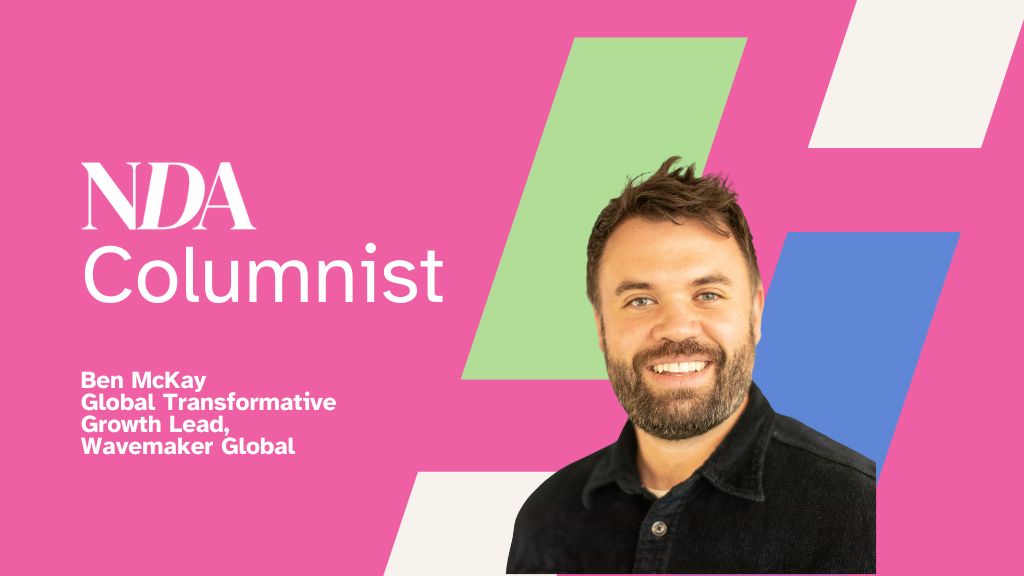By Ben McKay, Global Transformative Growth Lead, Wavemaker Global
Every year, marketing leaders, planners, and channel experts are tasked with achieving new levels of growth in an increasingly fragmented marketing environment. There is TV advertising inflation topping +11% in the UK (often a brand’s largest line-item investment), more companies launching and competing for heavily reduced consumer purchasing power and continually growing consumer expectations.
The pressure for new growth is tangible. Of course we need to maximise returns from current campaigns, but too often this gets in the way of preparing for the future.
You can see the emotional release from senior clients in particular when we tell them ‘don’t worry, there’s a better way: stop transforming and start learning’.
The majority of clients know exactly what questions they need to answer to transform but are unsure about how to take the first step. Often it is a question of confidence and motivation. Marketers need to be more confident about the process of learning, developing new programs, pilots and capabilities. Two motivating forces can help with this: setting a clear goal, and meaningfully aligning the team.
Rear view mirror measurement will only take us so far
Marketers are famous for overestimating the rate of change, but it appears that AI is catching up with estimations. The industry is not going to be short of disruptive forces in the near future, and getting better at understanding their impact on top and bottom-line growth should be a priority. There has been some utterly remarkable progress in understanding media profitability in the short and mid-term, but to leverage this in modelling for the future is where there is a significant and new upside. Agent-based modelling should play a bigger role in building more fidelity around future growth opportunities and risks.
What are the indirect consequences to growth if a businesses’ biggest competitor adopts a suite of margin-enhancing generative AI capabilities? What happens to marketing efficiencies if brand equity continues to decline? What happens to acquisition costs if customer expectations for personalisation continue to increase, but means to respond doesn’t keep pace? What happens if marketers invest in brand equity versus operating solely in the lower funnel? With the help of agent-based modelling, marketers can model multiple variables across a population of individuals and identify the drivers or detractors of growth. Such analysis helps to connect marketing to business planning and helps size the necessary motivation for change needed today.
It’s through such modelling where we have seen brands like Doordash move from just using lower funnel advertising to brilliant full funnel marketing around the world .
In a world of marketing fragmentation, tightly aligned teams become an unfair competitive advantage
The industry needs a moment of honesty about its readiness to face future growth challenges. This is not just about strategy, but also the practical alignment of investments.
The Consultancy industry has excelled in business strategy and channel-specific auditing, but there is work to be done in the grey middle to avoid reinforcing silos of learning and change. There’s an opportunity to develop a more holistic approach with an aligned learning agenda that sits horizontally across disciplines. Teams today are too constrained by Golden Rules and planning principles that don’t necessarily reflect enough of the skills, data and tech requirements and workflows that teams need to build for the future. Giving attention to what binds (or divides) teams will prepare us for progressive, new competitively advantageous frontiers where specialists must more closely align.
There are growing examples of where teams must more closely align – such as where immersive experience, communities and content are accelerating to full-funnel solutions: think G-Commerce, social commerce or creator commerce. Or where tech and creativity converge with the assistance of AI. Or where content and data strategies must align behind a clear value exchange with the consumer…and so on.
Client interviews and feedback tells us that alignment of such contrasting capabilities can feel impossibly hard, though, so where to start? The first building blocks that Wavemaker sees from some of its most ambitious global client teams, such as Audible, comes down to aligning behind a common language: a single view of the audience, learnings and success.
There is most definitely a way.
And the results are clear…
Some of the best organisations at learning and managing change I’ve had the pleasure of working with were in the price comparison space – CompareTheMarket and MoneySupermarket in particular. If you want to see the power of transformative learning, look at such ‘intermediary’ sectors that – right at their core – are audience-centric technology businesses wrapped with shrewd marketing. In the absence of not selling their own ‘product’, the profits and losses of these businesses depend on being at the sharp end of answering the questions: ‘what are we learning?’ and ‘what value are we creating’?
CompareTheMarket, for example, had a monthly, parallel executive board called the ‘Capability Board’. This is the same executive team that ran the business and asked the question of ‘what is performing?’, but also allows them to embed advisors into the heart of their decision-making to help them answer the question of ‘how do they future-proof their performance?’, identifying, roadmapping and governing new sources of growth. A number of their planning, tech and content capabilities today spun out of such consultations.
The same model can be adopted by marketing leadership – focussing on developing a holistic and transformative learning agenda, considering investments that do something for today and learn something for tomorrow.
The moment people think about new ways to learn and grow, they create the potential for discovering white (or at least less contested) space, but of course, it’s hard. As such, ensuring there is enough fuel in the motivational tank is going to keep everything going when things get tough. The good news is that achieving these career highlights can boost motivation in their own right.
Word Count: 1069









